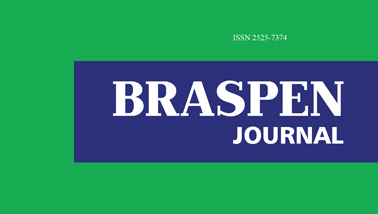Tempo de jejum em pacientes internados em um hospital de atendimento terciário
Fasting time in inpatients in a tertiary care hospital
Claudiana Leite de Souza, Adélia Maria Rocha Soares, Mayka Aguiar Brilhante, Saara Leal da Silveira
Resumo
Introdução: A terapia nutricional (TN) consiste na oferta de aporte calórico e nutricional para o indivíduo por via enteral ou parenteral. A indicação da via de administração da dieta dependerá da situação clínica do paciente. Objetivo: O estudo consiste em acompanhar e avaliar o tempo de jejum dos pacientes internados em um hospital de atendimento terciário, assim como, identificar os motivos de suspensão de dieta e avaliar a implementação de planos de ações para minimizar o tempo de jejum. Método: A amostra foi composta por todas as placas de zero preenchidas, no período de julho de 2014 a junho de 2015. Foram extraídos os motivos do jejum, tempo de jejum e foi considerado tempo de jejum inadequado superior a 12 horas. Ao estudo ainda foi agregada a análise dos relatórios bimestrais e intervenções contidas no mesmo, referentes ao tempo de jejum. Resultados: A média de tempo entre os meses de julho a dezembro de 2014 foi elevada e o maior percentual se concentra nos exames laboratoriais. Em 2015, com o objetivo de melhorar o acompanhamento dos motivos para suspensão da dieta, realizamos um planejamento para acompanhamento dos dados, distribuindo as análises por bimestre. Conclusão: O tempo de jejum adequado para exame, cirurgia ou por outra necessidade do paciente é crucial para evitar o catabolismo orgânico do paciente e fornecer suporte para reestabelecimento da saúde.
Palavras-chave
Abstract
Introduction: Nutritional therapy (TN) consists of the supply of caloric and nutritional intake to the individual via enteral or parenteral. The indication of the route of administration of the diet will depend on the clinical situation of the patient. Objective: The study consists of monitoring and evaluating the fasting time of patients hospitalized in a tertiary care hospital. As well as, identify the reasons for diet suspension and evaluate the implementation of action plans to minimize fasting time. Methods: The sample consisted of all zero filled plaques, from July 2014 to June 2015, the reasons for fasting, fasting time, and inadequate fasting time of more than 12 hours were extracted. The study also included the analysis of the bimonthly reports and interventions contained therein, referring to the fasting time. Results: The mean time between the months of July and December 2014 was high and the highest percentage is concentrated in laboratory tests. In 2015, with the objective of improving the follow-up of the reasons for the suspension of the diet, we performed a planning to follow up the data, we distributed the analyzes by bimester. Conclusion: Adequate fasting time for examination, surgery, or other patient needs is crucial to avoiding patient catabolism and providing support for health reestablishment.

